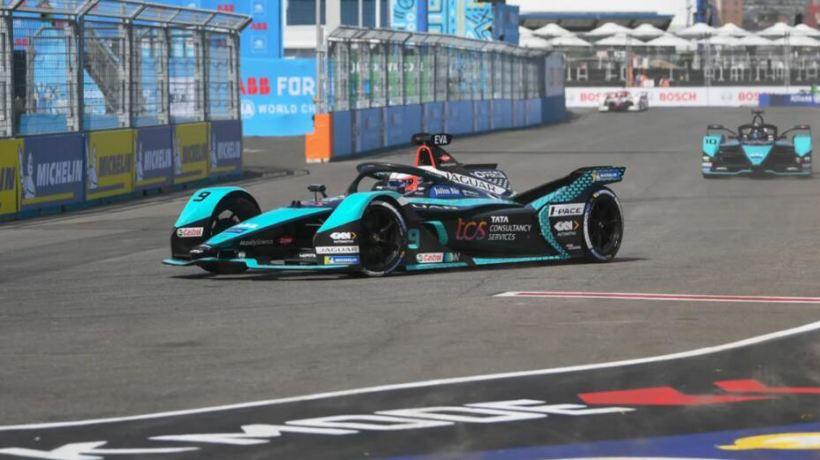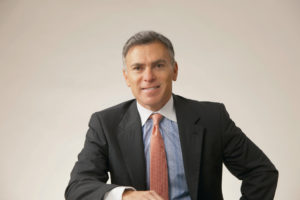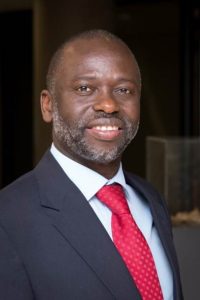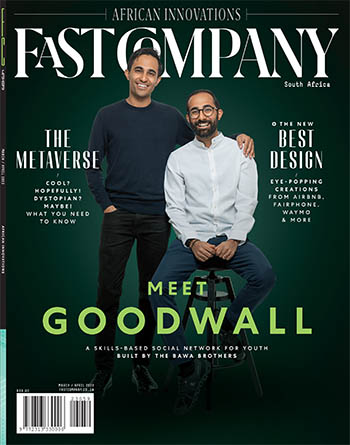Every week, Phil Charles watches two movies at the same time, trying to follow and understand both simultaneously. It’s his homework. The technical manager for the Jaguar racing team, Charles works in the control room on race days, trying to comprehend the needs of two drivers racing at the same time—as they did last weekend at the Brooklyn circuit, where Jaguar driver Mitch Evans placed third among 22, and his teammate Sam Bird came in fifth. Charles constantly hears feedback from the drivers, and advises them how to react. At the heart of all the decisions is energy efficiency: when during the 45-minute race to expend, and to conserve, a finite amount of power.
To the casual observer, this might look like the Formula 1 races they’ve seen on TV, but it’s something else: Formula E, the electric alternative to the motorsports juggernaut. Though it’s quieter and with fewer gasoline fumes, it boasts vibrant city-center racing with more twists and turns—and a slice of the glitz of the original. Insiders say the sport won’t replace F1, which is now gaining more popularity in the U.S. (principally, thanks to a crowd-pleasing Netflix documentary, Drive to Survive), but coexist as an alternative, especially as advances in technology allow its cars to catch up with speed and acceleration of the original. As it does so, engineers are applying their learnings to inform the development of road EVs, the industry term for electric vehicles made for mass consumption. But, two of the major teams are treating that approach differently: While Jaguar TCS will continue on the circuit to expand its electric education, Mercedes will bow out after this season, to focus, specifically, on road EVs.
“Formula One is the pinnacle of internal-combustion engine racing. We’re the pinnacle of electric racing,” says James Barclay, team principal of the Jaguar Formula E team. The idea for the sport goes back to 2011, when the president of Fédération Internationale de l’Automobile (FIA), Jean Todt, and then-European commissioner for industry, Alejandro Agag, decided to capitalize on increasing focus in Europe on the electrification of vehicles to help drive down carbon emissions. Its first season was in 2014, and eight years on, the championship has 11 teams and 22 professional drivers, racing in 16 cities worldwide. In the second of the double-header races in Brooklyn last weekend, Mercedes and Jaguar TCS (named for its partnership with Tata Consultancy Services) both landed podium finishes, in second and third, respectively, behind Chinese team DS Techeetah.
A RACE BUILT AROUND ENERGY EFFICIENCY
Electric racing tech has progressed quickly in the years since the sport launched. The first cars used in the original races, known as Gen 1, had to pit stop to switch out the entire car because it couldn’t make it the whole course with one battery. Now, the Gen 2 car completes the entire track, reaches speeds of up to 170 miles per hour, and also boasts regeneration, whereby braking recaptures some of the car’s kinetic energy by charging the battery. When Gen 3 launches next season, it will have front regeneration—and it will pit stop in order to fast-charge, partly just to demonstrate to spectators that it can be done. “What Formula E does very well is [being] a complete and utter technical demonstrator of what the future of mobility looks like,” says Jack Lambert, a Jaguar racing engineer.
While Formula 1 innovates aggressively in aerodynamics, because the competing teams are allowed to uniquely modify their designs, the car shapes and structures in Formula E stay the same across teams, from the chassis to the battery. What varies between rivals are the powertrain and software (and, of course, the drivers). Engineers are constantly iterating the former two, to compete with the others. Because they have the same amount of power, and the same track, it’s important that teams make their powertrains the most efficient. Jaguar has had five generations of powertrains—that’s five motors, inverters, gearboxes, and software solutions. “If you compare that to the cars we drive, that’s incredibly rapid progress,” Lambert says.
Race strategy is based on energy efficiency. Each car has 200 kW of power available for a race, and teams must decide how and when to expend it. They wouldn’t divide it exactly over the 45 minutes because every minute of a race is not the same; drivers need to react to opponents overtaking you at different times, for instance. They also have to regulate the battery temperature, using various internal coolant systems, which shouldn’t go above 72 degrees Celsius (162 degrees Fahrenheit). “We do everything we can to not minimize heat, but put it in the right places,” Lambert says.
In the control room, Charles, the technical manager, looks after both drivers. He’s hearing information from them in real time on the shared radio—coded like football plays that he must decipher. “All the time, we’re trying to optimize their energy strategy,” he says. If a tire’s getting too hot, say, they might change some of the control systems on the car to give the rear tire an easier life. And it’s up to the driver to make the changes happen via controls on the steering wheel. “For a racing driver nowadays, it’s not just about being fast,” Charles says. Rather, it’s a test in multitasking.
Whereas F1 drivers have 13 sets of tires over a weekend, to change in pit stops according to conditions, Formula E drivers only have two sets over a normal weekend, another sustainability decision by the championship, to reduce unnecessary rubber. Managing how to use your two sets of tires is one of the big challenges for Formula E teams. “When you use one tire across multiple conditions, you need to know it inside and out,” Lambert says. City to city, the surfaces also vary, and city streets are a particular challenge for tires, with their mixes of concrete, asphalt, fresh tarmac, paint, dust, and other materials.
THE TRACK AS AN EV TECH TEST LAB
Motorsports have always been a test lab for new technology. Formula 1 helped drive internal combustion innovation. Many features we take for granted in cars now were first innovated in F1, and later brought to the road, including carbon-fiber chassis, paddle shifters, adaptive suspensions, and steering wheel buttons.
Similarly, many of the concepts necessary for circuit success can be applied to road EVs. The urgency is clear: by 2025, Jaguar will be a luxury all-electric car company (partly, this is driven by legislation; in the U.K., manufacturers will not be permitted to sell combustion cars after 2030). It’s already demonstrated the application: In 2020, the Jaguar I-Pace, an all-electric performance SUV, was inspired by approaches from Formula E, including temperature and torque management.
One example is the use of silicon carbide, a semiconductor material that conducts electricity and allows cars to switch faster from DC to AC current, needed to rotate the motor to create traction. Jaguar started using it four years ago, and has quadrupled the speed of switching current, and is now planning to use it for chips in road vehicles, where it’s not yet commonplace (though Tesla did dabble with it, before some recalls that may have been connected to the materials). “This like a real-world test, it’s a fast-paced laboratory,” Charles says. “When you compete with 11 teams that are trying to beat you every day, you push the technology further.”
But, while Jaguar wants to stay in the game to continue innovating, Mercedes is exiting. It has helped their road innovation in the same way: the team that developed the power unit for the racetrack also helped develop the Mercedes VISION EQXX, a sedan that recently did over 1,000 km on one charge in real-world driving conditions. For Mercedes—like Audi and BMW, which are also exiting—it’s an opportunity to focus more on the road, and meet aggressive EV targets. “We shouldn’t forget the core businesses is road cars,” says Ian James, team principal of the Mercedes-EQ Formula E team. (The Mercedes race team, though, including James, will continue to work for the British manufacturer McLaren, which bought the Mercedes team as it enters the competition next year. And, being the team behind superstar Lewis Hamilton, it’s no surprise Mercedes will stay in Formula 1.)
Formula E has also been essential for awareness. That’s the power of sport, James says, in that it can naturally bring people in without forcing a sustainability message onto them “We can talk about efficiency all day long,” James says. “But you have to make it exciting.” Many people will be drawn by the appeal that “these are really fast cars. They’re very, very cool.”
F1 is not going anywhere
Formula E is bringing in a younger demographic, a population already concerned about climate, which the competition is already actively courting with its format. In its embrace of gamification elements, it almost resembles Mario Kart (no banana peels, though): It has “attack mode,” where driver must activate a 25 kW boost at a time of their choice during the race, and a “fan boost,” extra boosts for most popular driver, voted on by viewers before the race. (These also add further challenges to when to use power.) “It’s taking the traditional racing rulebook and ripping it up,” James says. “Coming up with a format that’s not completely alien, but has these really edgy elements to it.”
So, it’s a different beast to F1. The predecessor has bigger tracks and higher-speed corners. It speaks to the senses, James says, with the rawness of the noise and smell of the oil. But James, a self-confessed “petrolhead,” is now an “electric head.” There are certain things that Formula E allows aren’t possible with F1: chiefly, city-center racing, to promote accessibility for everyday fans. “We’re right here in Brooklyn,” James says. “When has there been a motor race in Brooklyn?” (Most F1 races are on tracks two or three hours from downtowns, though some are street circuits, including Monaco; Melbourne, Australia; and Abu Dhabi, UAE.) He describes the thrill watching racing among skyscrapers in Hong Kong, or in Berlin, where the race actually runs through the hospitality club, which couldn’t be done with F1 due to noise and pollution. And, the city circuits help innovate, Charles says: they need systems that will navigate tight, twist, awkward tracks.
But while electric vehicles are going to replace internal-combustion engines—whether due to consumer preference or regulation, F1 isn’t going anywhere: it racked up 1.5 billion TV viewers in 2021 versus Formula E’s 316 million. Even if Formula E’s tech is catching up (Gen 3’s top speed will be 200mph, close to F1’s current 230 mph), the expectation is that the two competitions will coexist, with Formula E as an alternative, with different challenges and selling points. So, for all the good that Formula E does, it won’t offset F1’s emissions, estimated at around 256,000 CO2-equivalent tonnes per season. But, the engineers agree that F1’s growing popularity—illustrated by a 47% increase in American viewers from 2021 to 2022—helps lift the entire brand. “I don’t think we’re so proud that we wouldn’t hang onto the coattails of that and use that halo effect,” James says, “especially here in the U.S.”
ABOUT THE AUTHOR







